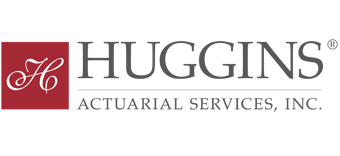Developing, reviewing, and revising the rates and products offered to customers are important for maintaining the profitability and solvency of an insurance operation. Whether based on a company’s own loss experience, third-party industry information, or other sources, a company’s rates and products should be monitored regularly to reflect changes in the environment, the market, and applicable laws and regulations.
What is Rate Making and Product Development?
Rates are the fundamental prices that an insurer charges a customer. The Actuarial Standards Board defines rate making as the process of estimating future costs associated with the transfer of risk through insurance.
Product development is the process of assessing or projecting the market demand for insurance and designing appealing insurance services and contracts (aka “forms”) accordingly. Rate making and product development include a broad spectrum of services.
What is the value of Rate Making and Product Development?
State insurance regulations require that rates be adequate, not excessive, and not unfairly discriminatory. To remain competitive, insurers must offer the insurance products and policy forms that customers value. Rate making and product development require extensive expertise to ensure that the proposed rates meet these standards and that the products appeal to customers. Additionally, from the insurer’s perspective, rate adequacy is intimately related to solvency and financial strength.
Changes in economic conditions, competitors, social norms, building codes, court awards, laws and regulations, among other things, influence the cost and frequency of insurance claims. Rates charged for insurance products can quickly become inadequate, excessive, uncompetitive, or out of compliance with changing regulations. Prudent insurers regularly review the adequacy and appropriateness of the rates charged.
How can Huggins help?
Huggins’ actuaries are experts in a broad spectrum of rate making and product development services. We can provide any of the following services individually or in combination:
Develop Rates, Rules, or Forms
Whether adding to an existing program or introducing an entirely new product, we can create the rates, rules, and forms you need, utilizing various methods including Generalized Models and Predictive Analytics. We can derive base rates or loss costs, develop ratemaking factors, or assess trends. For loss costs, we can also derive Loss Cost Multipliers (LCM) to convert the company’s adopted loss costs to rates.
We can also develop a variety of rating plan complexities. In many cases, a company’s rating plan makes use of “relativities” applicable to classes, territories, or coverages that further refine base rates to a customer’s specific attributes. Rating plans can also incorporate the following features:
- Deductible Credits;
- Experience Rating: setting a customer’s prospective premium in consideration of recent prior properly-adjusted loss and expense history;
- Retrospective Rating: adjusting a customer’s premium for a prior policy period based on the loss and expense history for that period.
Review Rates, Rules, or Forms
Existing rates, rules, and forms should be reviewed periodically to ensure their continuing appropriateness. We can conduct profitability analyses of your overall book or a particular segment. We can perform rate level reviews that will indicate if a rate change is appropriate, whether to base rates or rating factors, including whether or not a change to the LCM is indicated. We can also identify and assess the impact on rates of emerging trends in your data.
To successfully pursue your marketing plan or appeal to targeted segments of the market, you may need to know how your rates stack up to those filed by competitor companies. We can access filings made by your competitors to determine their filed rates or forms and prepare an analysis of rate or premium competitiveness displaying competitor rates or premiums by various rating categories.
Prepare and Submit Rate, Rule, or Form Filings
We can prepare and submit rate, rule, or form changes on your behalf to the State Insurance Department, via SERFF (System for Electronic Rate and Form Filing). We can also work with the State Insurance Department to respond to any questions or objections they may have.
Provide Actuarial Certification of Rates
Some regulators require that a credentialed actuary “sign off” on rates or rating elements Huggins have actuaries who are qualified to fulfill this requirement for its clients.
Assess Insurance or Reinsurance Contracts for Risk Transfer
To qualify for favorable accounting treatment, a contract must have a reasonable chance of a significant loss, which is known as “risk transfer.” We can evaluate contracts for the presence of risk transfer. Contracts for which risk transfer cannot be demonstrated must be accounted for on a less favorable deposit accounting basis.
Analysis of Policyholder Dividends or Assessments
We can calculate indicated retrospective rating programs and experience-based dividend programs.
The Huggins Advantage
Our firm’s philosophy centers on our commitment to the highest level of quality service delivered by quality people. Our long tradition of providing responsive, technical excellence to our clients’ needs through an integrated team approach requires that we focus on quality in every aspect of every engagement.



